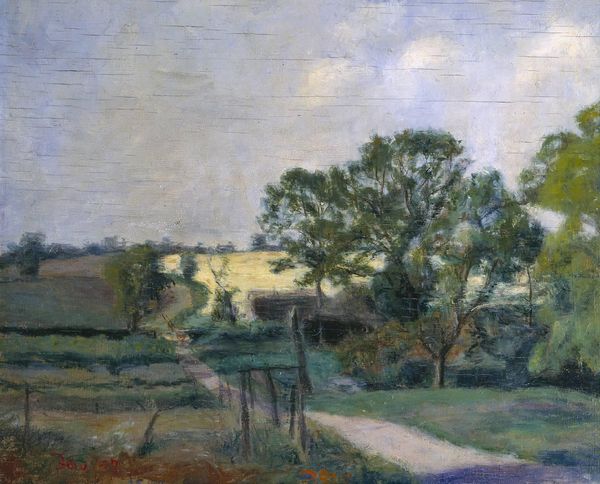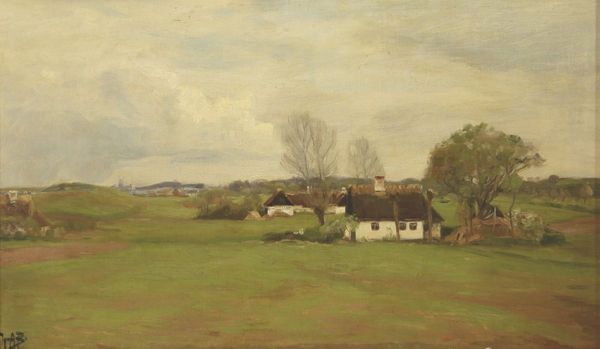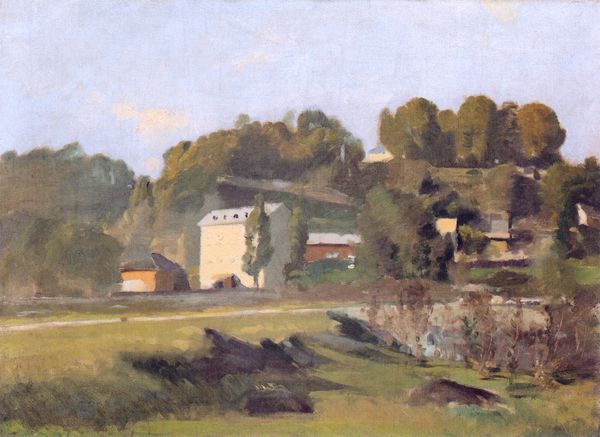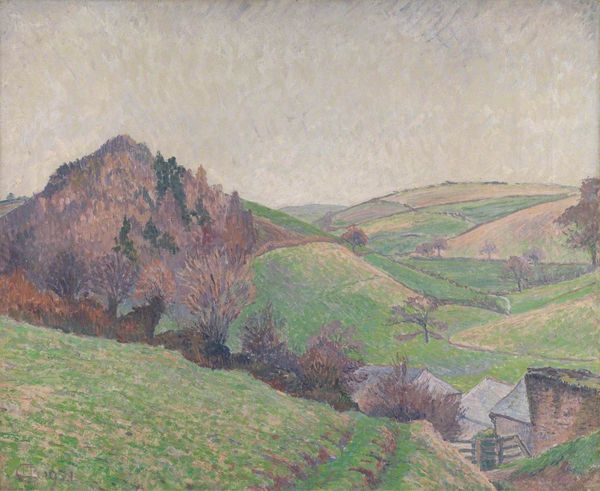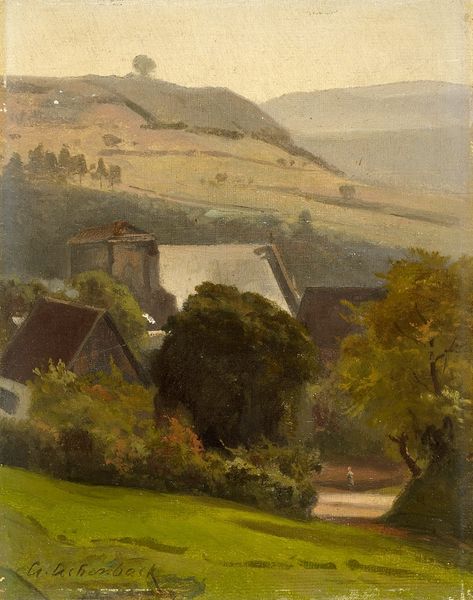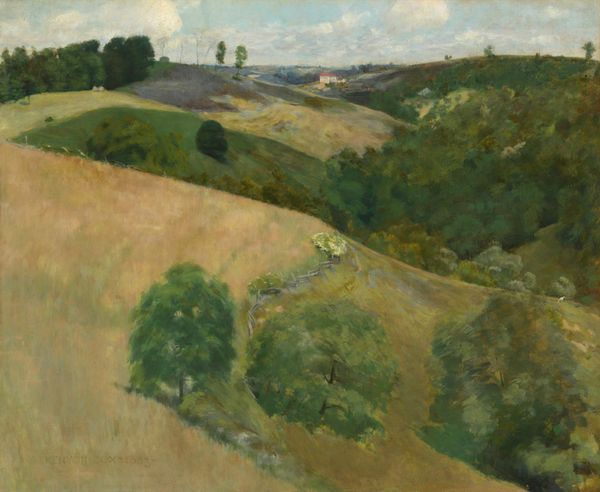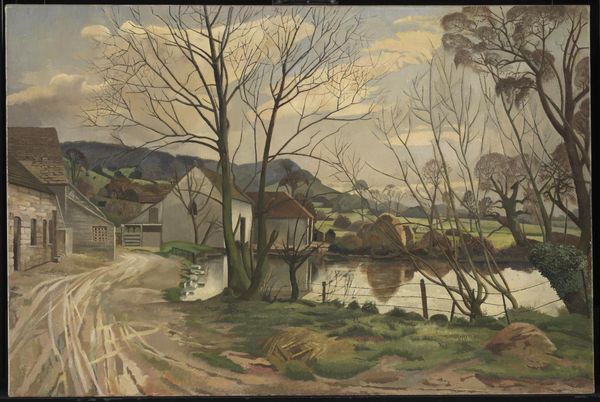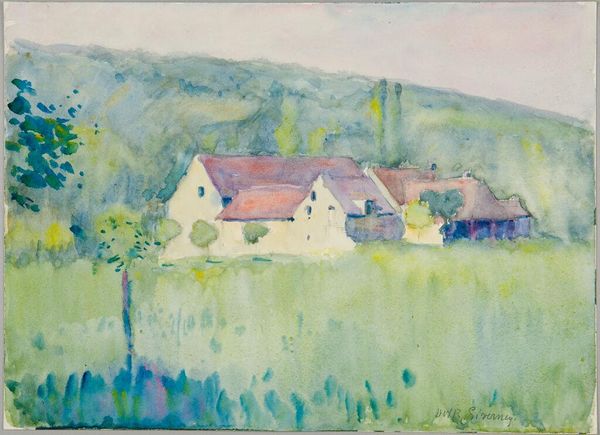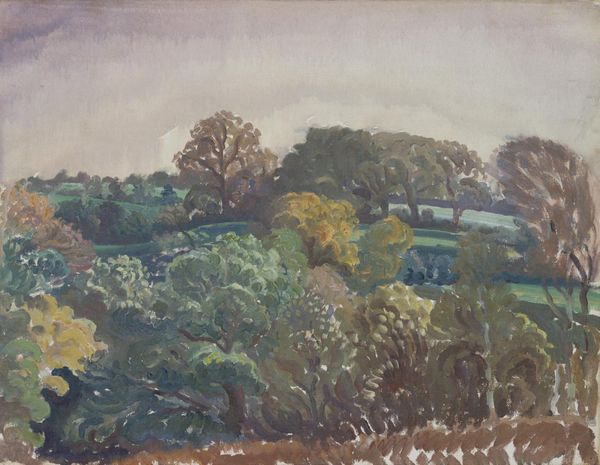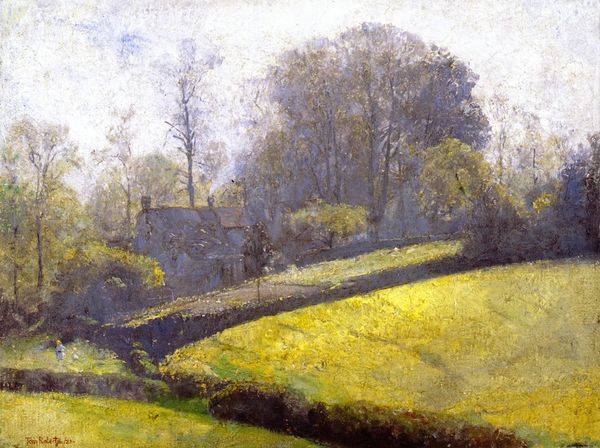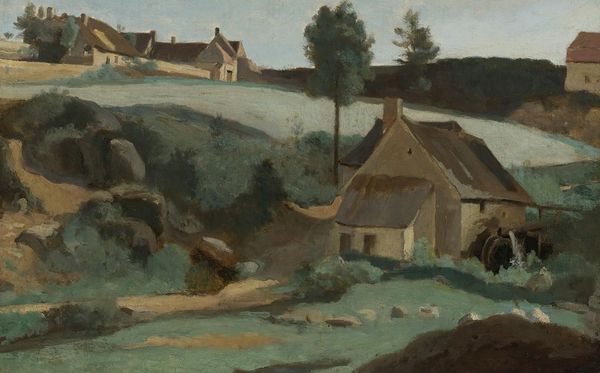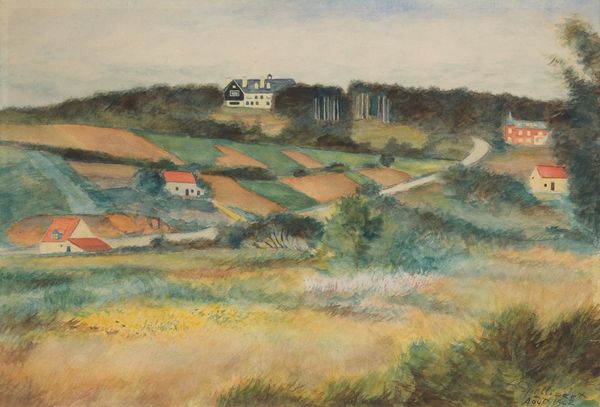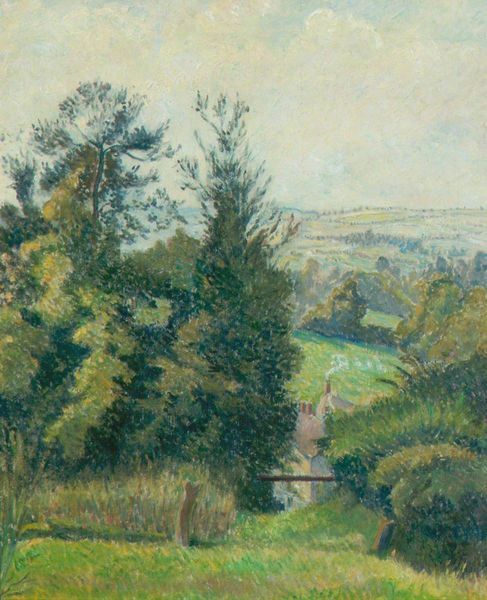
mixed-media, plein-air, oil-paint, watercolor
#
mixed-media
#
water colours
#
impressionism
#
plein-air
#
oil-paint
#
landscape
#
oil painting
#
watercolor
#
underpainting
#
mixed media
Copyright: Public Domain: Artvee
Editor: So, here we have Ladislav Mednyánszky's "Village below the Tatras," probably painted between 1880 and 1900 using mixed media. The landscape has an air of gentle melancholy, like a fading memory. What do you make of this piece? Curator: Fading memory is a lovely way to put it. To me, it whispers of transience. Look at the way he layers the watercolor and oil paint— it’s almost as if he's capturing not just the village, but the very *feeling* of a place, always shifting, never quite solid. The mixed media adds to the atmospheric effect, wouldn’t you say? What stands out to you? Editor: The blurred edges, especially in the foreground... they make me feel like I’m seeing it through a haze. Do you think that was intentional? Curator: Absolutely. Mednyánszky wasn’t interested in photographic realism. He was after something deeper, something felt. Consider also that he painted en plein air; it had to be quickly realized. And don't forget the cultural context; this was a time of massive social change, a fading aristocracy. This softness could echo the fragility of that era. A little sad, no? Editor: Very true! I never considered the social implications in this light! And, you're right, I sense something very fragile, very ephemeral. Curator: And that’s the magic, isn’t it? The way art can whisper stories beyond what's immediately visible, or even what the artist might have initially intended. That's what keeps me coming back to the canvas! Editor: I agree completely! It's incredible how much depth is packed into such a seemingly simple landscape! It feels more like a portal into a mood. Curator: Precisely.
Comments
No comments
Be the first to comment and join the conversation on the ultimate creative platform.
